A gift for gardeners from northern regions with a difficult climate - a stable and fruitful tomato "Snowdrop"
Residents of warm regions continually boast of tomato crops grown in garden plots. But are there many varieties that can take root and give a rich harvest in cold climates? After all, there is no doubt that northern residents also want to pamper themselves with products from their garden.
The short and cold summers are a serious obstacle for many cultures. But the Snowdrop tomato violated all the laws of nature and was able not only to adapt to the most severe climate, but also to bear fruit perfectly in adverse conditions. Moreover, the yield and taste are at such a high level that the culture is bred even on an industrial scale.
The content of the article
Characteristics and description of the variety
The Snowdrop tomato was bred by Siberian breeders in 2000. In 2001 it was entered into the State Register of Breeding Achievements. The name of the variety is not exaggerated at all, the culture was created for breeding in regions with a difficult climate, even in the Far North. In the south, culture takes root and grows more difficult, as it was created specifically for the harsh terrain.
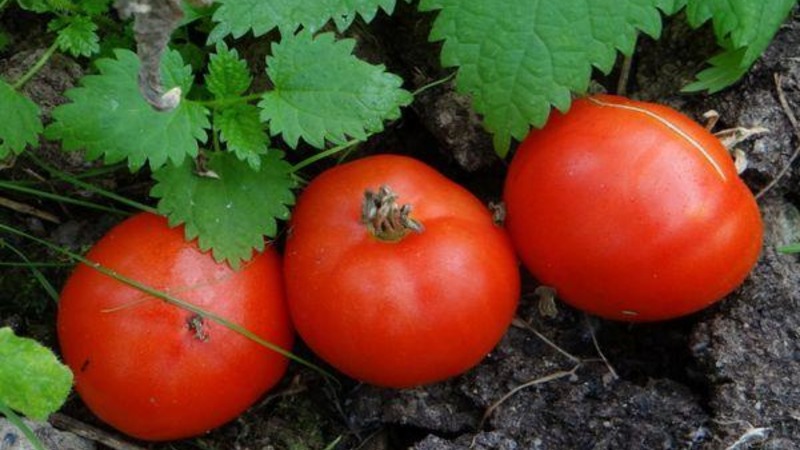
Distinctive features
The type of plants is semi-determinate, height 110-130 cm, the stem is strong, half-stemmed, requires obligatory garter and formation. It is not necessary to graze the crop because of the small number of side shoots. The foliage is moderate, the leaves are medium-sized, light green. The first fruit cluster is laid over 7-8 leaves, subsequent ones every 1-2 leaves. Each cluster forms 5 fruits.
The species is early ripening, harvesting begins 80-90 days after germination.
The yield is high, from 1 sq. m collect up to 20 kg of selected ripe vegetables. It bears fruit equally well both in greenhouses and in open beds. The ovaries are formed in all weather conditions.
Disease resistance is strong, practically not susceptible to fungal infections.
Fruit characteristics
Average weight 110-130 g, rounded shape, slightly flattened on top, bright red color. The taste is excellent, pleasant, sugary with barely noticeable sourness. The pulp is juicy, there are 3-4 seed chambers, there are many seeds. The rind is strong enough to withstand long-distance transport without losing its presentation.
The purpose of ripe vegetables is universal, they are perfect for fresh consumption, whole-fruit canning, pickles, pickles and making lecho, adjika, ketchup and juices.
The photo shows the Snowdrop tomatoes.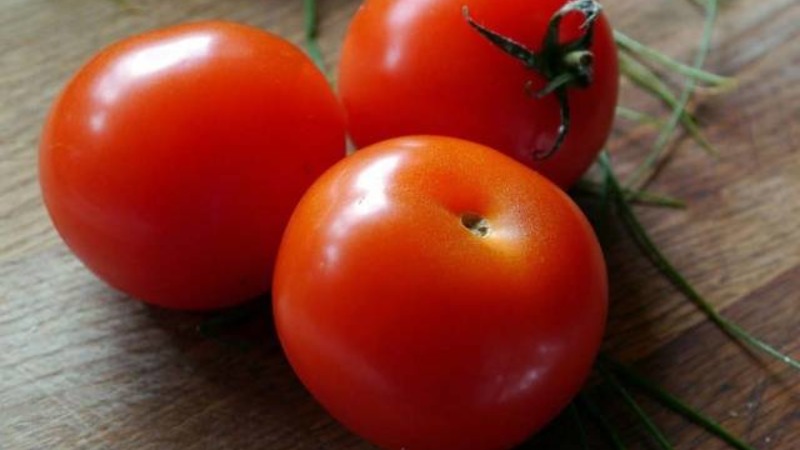
How to grow seedlings
Since the variety is frost-hardy, seeds are sown early. Seedlings are transplanted into the ground without fear of recurrent frosts.
reference! In the northern area, the tomato is planted in heated greenhouses, in the Urals it takes root well under the film, and in the central strip it grows without shelter.
Seed preparation
Correct preparation of seeds for planting consists in disinfection of the seed and treatment with a growth stimulator.
Disinfection is carried out in a weak solution of potassium permanganate for 20 minutes. After that, the seeds are thoroughly washed with running water and dried.
Growth stimulants improve germination. It is for this reason that the grains are soaked in "Zircon" or "Epin".In addition to specialized drugs, folk remedies are used as stimulants: aloe juice or potato juice.
reference! Seed disinfection guarantees healthy seedling growth.
Capacity and soil
The soil for a tomato needs nutritious and fertile. It is prepared from garden soil, peat and humus in equal amounts. A little superphosphate or wood ash is added to the resulting mixture. The soil is disinfected with a strong solution of potassium permanganate or steamed in the oven for 15 minutes at a temperature of 50 ° C. Then it is laid out in planting containers, filling them in half.
You can plant in a common box and in separate plastic and peat containers. At the bottom of any container, small drainage holes are made so that excess moisture can drain into them.
Before filling the containers with earth, some small pebbles or sawdust are placed on the bottom, which also serves as drainage. As the seedlings grow, the remaining soil is added to the containers, thereby providing young plants with a constant supply of nutrients. This is especially necessary in the northern regions where there is a lack of natural light.
Sowing
The seeds are buried 1 cm with a distance of 2.5-3 cm from each other. Sprinkle with peat on top, slightly moisten with warm, settled water and cover with a film on top. The covering material mimics greenhouse conditions, which improves seed germination. The containers are left in a warm room at a temperature of 23-25 ° C until shoots appear.
Seedling care
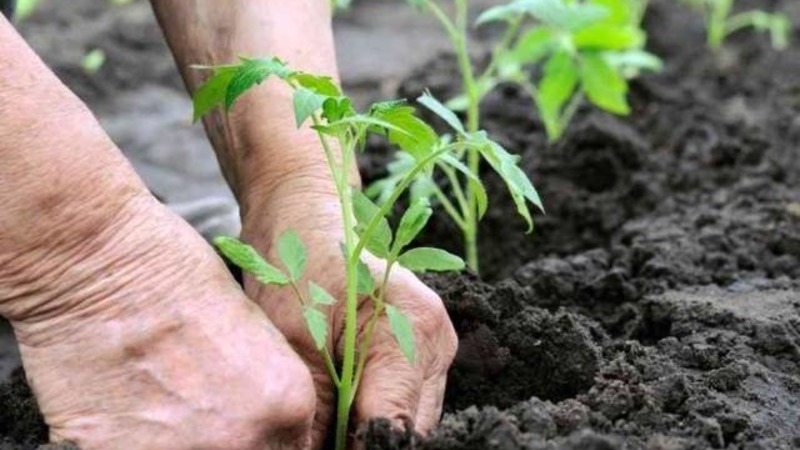
In case of short daylight hours in cold regions, you should take care of installing additional lighting in advance. Daylight hours should be at least 14 hours, with a lack of light, the seedlings will grow weakened.
When shoots appear, the containers are rearranged on the windowsill. Watered with moderately warm, settled water using a shallow watering can. After watering, the ground is gently loosened with a wooden stick.
When 2 true leaves appear, the seedlings dive, seating them in separate containers. If, after the pick, there is a weak growth of bushes, they are fed with liquid fertilizer for tomato seedlings.
reference! Top dressing must be combined with watering.
2 weeks before transplanting, the seedlings begin to harden so that they quickly get used to outdoor conditions. They are taken out into the open air in the daytime for 1 hour. Gradually, this interval is increased to 8-9 hours.
How to grow tomatoes
Seedlings are replanted in early June, when the soil warms up to 15 ° C. By this time, the bushes have 7-8 true leaves and a well-formed root system.
Landing
A week before transplanting, the soil is dug up and humus or a full range of fertilizers are applied. In the open field, beds are chosen in a sunny, unshaded place. The depth of the holes is not more than 20 cm. A little wood ash is placed at the bottom of each hole and filled with warm water.
For 1 sq. m place 3-4 plants. When planted more densely, the seedlings will prevent each other from fully ventilating and getting enough light.
Further care of the tomato Snowdrop
After transplanting, young plants are sprayed with a superphosphate solution. This technique speeds up photosynthesis.
Watered tomato in moderation, as the soil dries out. Excessive accumulation of moisture will provoke the development of fungal diseases. It is necessary to control the moisture level constantly, especially when breeding in a greenhouse. It is here that the humidity often exceeds the permissible norm, negatively affecting the development of plants. To lower the humidity level, the greenhouse is regularly ventilated.
After watering, the soil is loosened and hilled to improve the air permeability of the soil.
The first top dressing make a week after the transplant. Fertilized with a full range of minerals. The second time is fertilized during the formation of the ovaries. During this period, you can feed with organic matter, for example, bird droppings in a ratio of 1:15.
At the time of the beginning of ripening, the plants are fed with phosphorus and potassium for faster pouring of the fruits. And during the fruiting period, they are fed with nitrogenous substances.
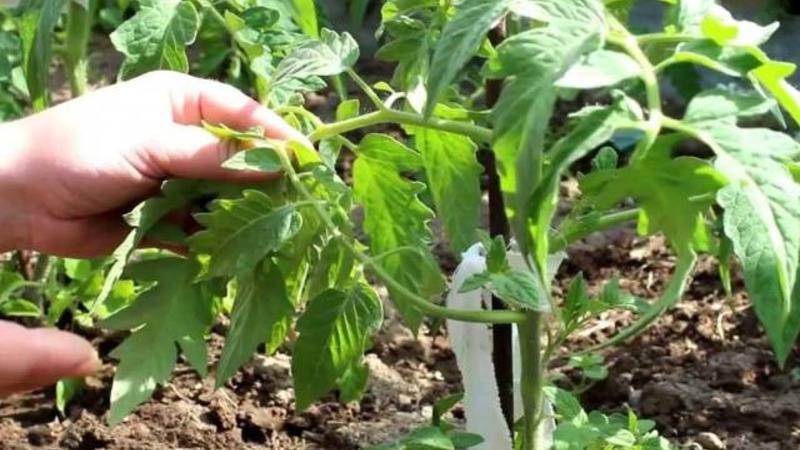
Features in care and possible difficulties
Stepsonies culture does not require, which greatly facilitates the work of gardeners. But in order to achieve high yields, the stem will have to be shaped. Form into three stems, removing all other shoots and lower leaves.
High growth requires compulsory gartersotherwise the stem will not support the weight of the fruit-bearing branches. Wooden stakes or metal rods are installed next to each bush. The stem is fixed almost immediately after planting in the ground, and the branches are fixed as they grow. Loose branches under the weight of the fruit will begin to creep along the ground.
Diseases and pests
In cold climates, fungal spores are most dangerous. Although the culture is distinguished by strong immunity, preventive measures should not be neglected.
Prevention includes:
- moderate watering;
- timely feeding;
- systematic loosening;
- land cultivation manganese;
- spraying plants with fungicides.
When plants are damaged by a fungus, the preparations "Fitosporin" and "HOM" are used.
Careful examination of the seedlings will help to notice changes in time and take the necessary measures in a timely manner. At the initial stage of the disease, the crop is much easier to save.
Of pests for tomato is dangerous aphid... They fight it by treating the stem with soapy water, which is prepared from 1 piece of laundry soap dissolved in a bucket of warm water.
Nuances for open ground and greenhouses
The main feature of the culture is its frost resistance, which makes it possible to breed it even in the Far North.... But in hot and arid regions, it is better not to plant a Snowdrop, it is not at all adapted to hot conditions.
Tomato is unpretentious to the composition of the soil. The main thing is to provide it with proper nutrition in the seedling period.
But the most compelling characteristic of culture is that a tomato can grow and develop with little or no outside interference. At the same time, the quantitative indicator will be quite acceptable, as well as the taste.
The only caveat: at the initial stage, when breeding in closed structures, you need to take care of additional lighting, which is indispensable on cloudy days. With a lack of light, seedlings will develop more slowly.
Harvesting and application of the crop

Experienced gardeners are advised to harvest the crop regularly, not allowing the fruit to overripe. In addition, the unloaded bush will accelerate the ripening of the remaining tomatoes.
The purpose of ripe vegetables is universal. All kinds of fresh dishes and winter preparations are prepared from them, including whole-fruit canning. Also, tomatoes are great for processing into tomato products. Delicious ketchups, sauces, lecho, adjika, juices are indispensable in winter.
Ripe tomatoes retain their presentation for a long time and can withstand long-term transportation. Therefore, entrepreneurs breed the variety on an industrial scale.
Advantages and disadvantages
The positive qualities of culture speak for themselves:
- frost resistance;
- high rate of fruiting;
- the possibility of breeding in the Far North;
- strong immunity;
- simple agricultural technology;
- does not require pinning;
- great fruit taste;
- long-term storage;
- long transportation;
- versatility in cooking;
- the possibility of breeding on an industrial scale.
The conditional negative sides include the need for a garter and formation and intolerance to a hot climate. But so many tomato crops have been created for the southern regions that this factor is insignificant.
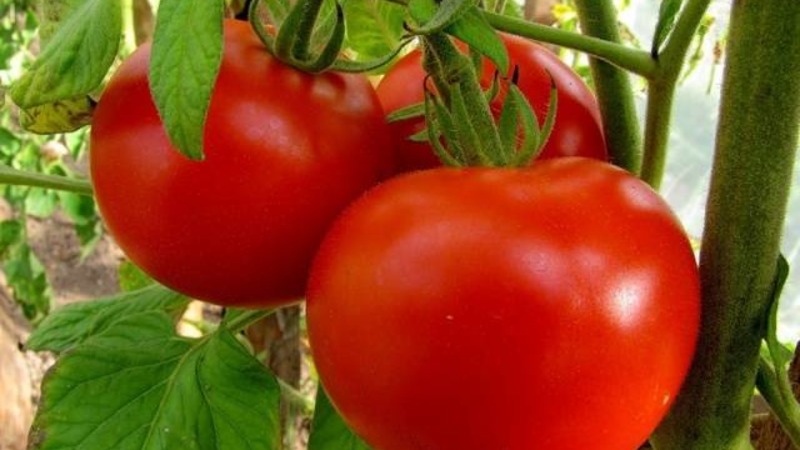
Farmers reviews
The characteristics and reviews of the tomato are the most favorable and reliable. Culture helps residents of cold regions, delighting them with excellent ripe vegetables.
Irina, Novosibirsk: "I first saw it in the photo and decided to drop it off at my place.The seedlings turned out to be strong and healthy. And leaving took the minimum amount of time and effort. The harvest was frankly pleased - about three kilograms from each bush! The taste of the fruit is excellent, just what I love. "
Anna, Tver: “I thought for a long time what to plant in my garden. I don't have much free time, so I need an unpretentious culture to care for. I accidentally heard about this variety. At first, I doubted for a long time, but still sowed the seeds. And I didn’t regret it at all. There were a lot of tomatoes, the twists were amazing. She did not stepchild, only tied up. The seedlings were not sick at all. In a word, I'm happy. "
Conclusion
Undoubtedly, the main advantage of the Snowdrop tomato is its ability to take root in a harsh climate. But do not forget about other advantages: strong immunity, high fruiting rate and, of course, the excellent taste of tomatoes. The high demand in the sales markets once again confirms the quality of this unique variety.